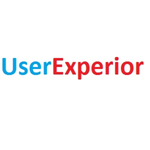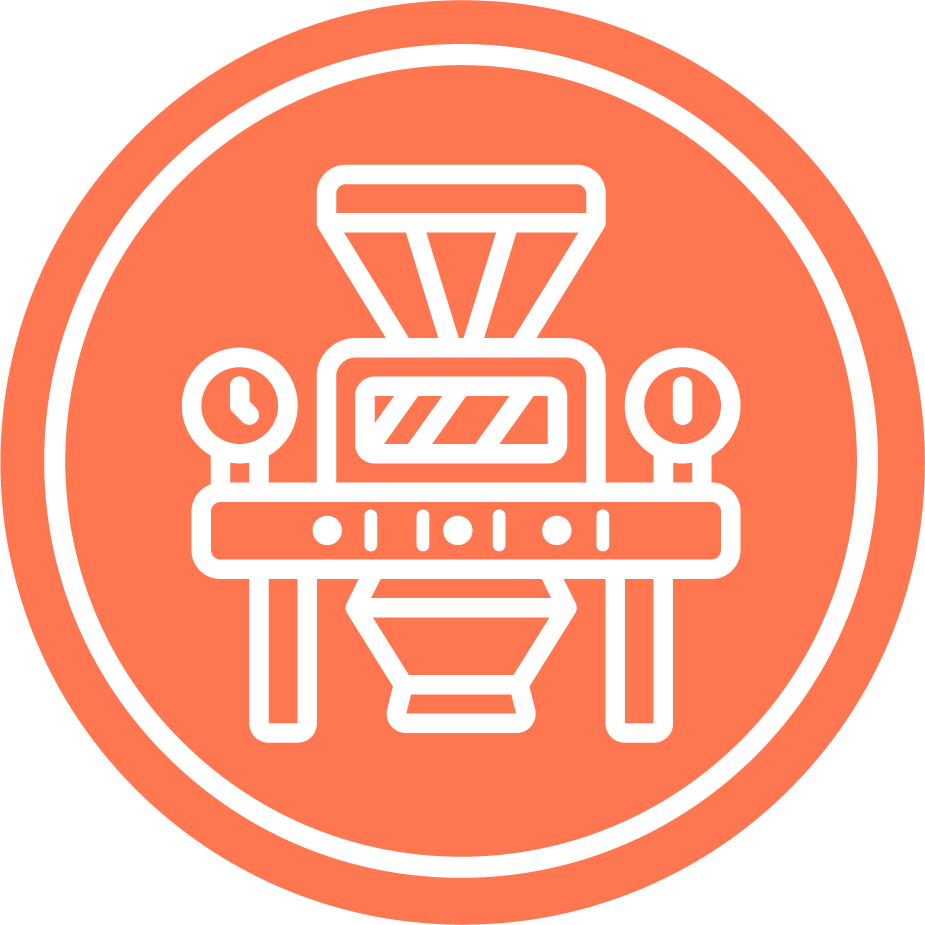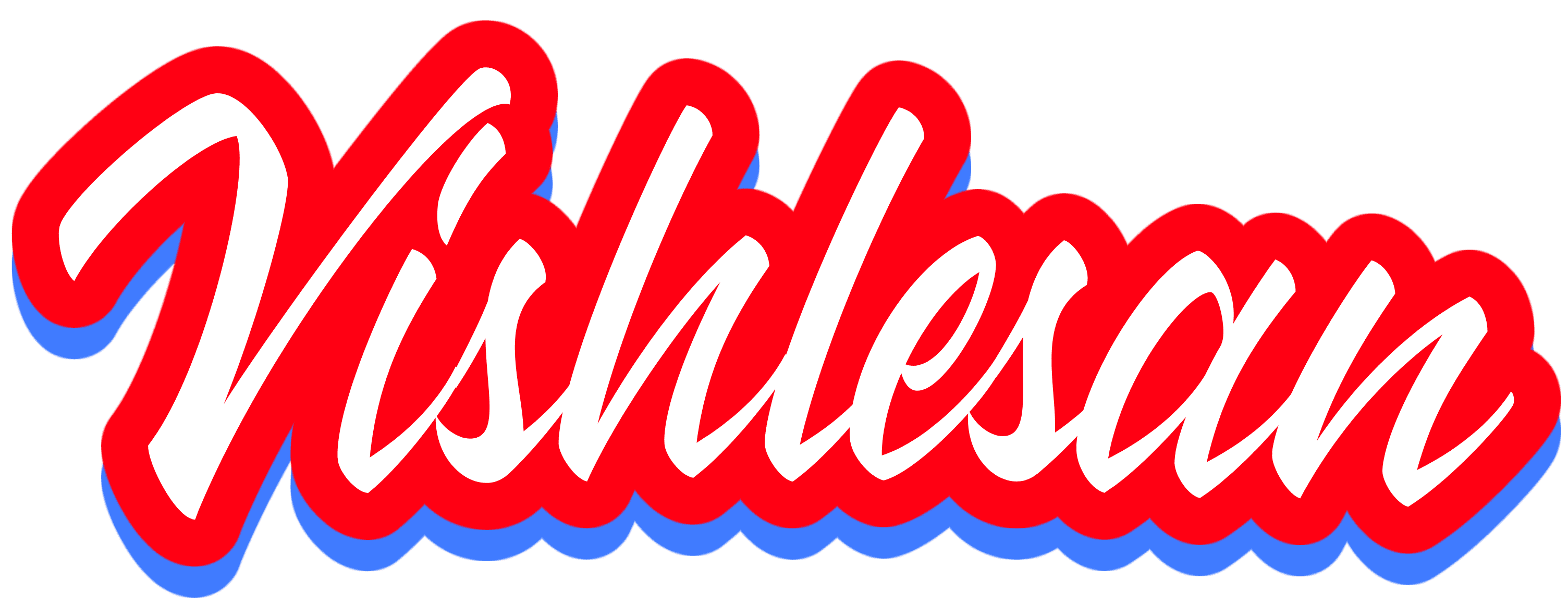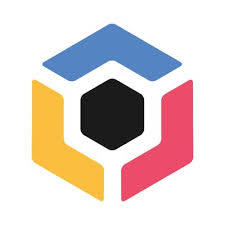Yes, most heatmap applications can be used on multiple devices and platforms. This is because they are web-based or feature mobile apps that work with a variety of operating systems. This allows customers to access and analyze their heatmap data from computers, laptops, tablets, and mobile phones. It also enables cooperation and mobile access to data, allowing for more efficient decision making.
List of 20 Best Heatmap Software
Experience the full potential of your website with Busatools Heatmap! This robust tool offers in-depth analysis of user behavior, providing valuable insights on clicks, scrolls, and engagements across various devices. Optimize conversion funnels, enh...Read More Busatools Heatmap
Hotjar is software that enables you to capture leads and gain valuable insights into user behavior. Its user analysis and feedback features give you a comprehensive understanding of your users and enhance their website experience. With real-time visi...Read More Hotjar
Browsee is a AI-powered solution for optimizing your websites user experience. By analyzing and highlighting relevant user sessions, it helps you stay on top of feedback and support issues in real-time. With Browsee, you have complete control over en...Read More Browsee
Attention Insight, an AI-driven tool that predicts visual attention with an impressive 96% accuracy. Powered by a database of 70,000 eye-tracking studies, it enables you to optimize your designs before launch. Enhance user engagement and increase con...Read More Attention Insight
UserExperior is a digital experience monitoring software designed to identify app issues, offer in-depth insights into user journeys, and expedite resolution of support problems. Trusted by prominent brands, it offers robust privacy measures and seam...Read More UserExperior
the Smart EMP software – your ultimate solution for effective environmental monitoring. This cutting-edge program automates mapping, scheduling, and corrective actions to streamline the process. Keep your surroundings safe and clean effortless...Read More Smart EMP
Freshmarketer is solution for crafting personalized customer experiences. With our powerful platform, marketing teams can gain valuable insights on audience behavior and engagement, allowing them to create unique and engaging interactions throughout...Read More Freshmarketer
Quantum Metric is a digital analytics platform that empowers businesses to swiftly pinpoint and resolve user experience obstacles. Powered by AI, our solution enables organizations to identify revenue gaps and improve their online performance in real...Read More Quantum Metric
VWO is optimization software, designed to help you drive conversions on your website. With its easy-to-use interface, you can create and implement optimization strategies swiftly. Collaborate with other tools seamlessly and run A/B tests without any...Read More VWO
Busatools Session Replay solution for improving website usability. With its cutting-edge session recording feature, you can track and analyze user interactions in real-time, including mouse movements, clicks, taps, and keystrokes. This data allows fo...Read More Busatools Session Replay
Vishlesan is website analytics tool that offers in-depth insights into your websites performance. With its advanced features such as heatmaps, session tracking, and recordings, you can gain a better understanding of user behavior and make necessary o...Read More Vishlesan
Instapage is your ultimate solution for driving successful marketing campaigns. With its powerful features, seamlessly integrated with popular CRM, email marketing, and optimization tools, Instapage ensures optimum efficiency and affordability in Con...Read More Instapage
LiveSession is a product analytics tool that offers detailed insights into user behavior. With its session replay and event-based analytics features, businesses can enhance their user experience, troubleshoot issues, and boost conversion rates. This...Read More LiveSession
NotifyVisitors is a marketing automation software that uses AI technology to help you reach your audience effectively. Its omnichannel capabilities allow you to connect with leads through multiple channels including email, SMS, push notifications, an...Read More NotifyVisitors
ContentSquare, a customer feedback software that empowers you to deliver exceptional service tailored to your clients preferences. With interactive features and seamless data collection from various sources, this innovative platform helps you gather...Read More ContentSquare
FullStory is a customer experience software that revolutionizes digital experiences and drives growth by retaining customers. Offering unmatched support, FullStory equips businesses with a comprehensive understanding of customer struggles through pow...Read More FullStory
Matomo Analytics, the premier web analytics platform that focuses on user privacy. With full data ownership and adherence to GDPR regulations, over a million sites worldwide rely on us for immediate insights. Dont sacrifice data protection for perfor...Read More Matomo Analytics
Lucky Orange is a website optimization platform aimed at providing comprehensive insights into visitor behavior. With tools like dynamic heatmaps, session recordings, and customizable surveys, it enables effortless enhancement of user experience and...Read More Lucky Orange
Plerdy is a CRO platform specifically designed to enhance website performance for internet marketers. Its comprehensive tools allow you to analyze visitor behavior and track click and scroll activity, enabling you to improve usability and drive conve...Read More Plerdy
Smartlook is a leading conversion optimization software that offers high-quality analytics for both websites and mobile apps. It features session recording and event tracking, providing valuable visual data for your business. With its advanced capabi...Read More Smartlook
Learn More About Heatmap Software
- What Is Heatmap Software?
- What Are The Recent Trends In Heatmap Software?
- Benefits Of Using Heatmap Software
- Important Factors To Consider While Purchasing Heatmap Software?
- What Are The Key Features To Look For In Heatmap Software?
- Why Do Businesses Need Heatmap Software?
- How Much Time Is Required To Implement Heatmap Software?
- What Is The Level Of Customization Available In Heatmap Software?
- Which Industries Can Benefit The Most From Heatmap Software?
- Conclusion
What Is Heatmap Software?
Heatmap software is a sophisticated analysis tool that uses color-coded maps to visually depict data. It allows consumers to rapidly and simply grasp complex data sets by emphasizing the most relevant information, making it a valuable tool for decision-making and improving user experience. One of the key tasks of heatmap software is to monitor and analyze website or app activities including clicks, taps, and scrolls.
This enables businesses and organizations to better understand how visitors interact with their digital platforms, indicating potential issues or areas for improvement. Furthermore, heatmap software may be used to track and evaluate user activity and interaction, providing useful information about which features and pieces are most popular and effective.
Furthermore, heatmap software can be used for A/B testing, which involves comparing several versions of a website or app to determine which one performs better in terms of user engagement and conversion rates. This enables organizations to make data-driven decisions when designing and optimizing their websites or applications. In terms of capabilities, heatmap software often includes customized heatmaps, filters and segmentation options, click and scroll tracking, user session recordings, and a variety of visualizations to meet different needs and tastes.
Some advanced heatmap software also contains additional analytics, such as conversion funnels and form analysis, to provide a more complete picture of user activity and site performance. When choosing a heatmap program, check for user-friendly interfaces, data quality and dependability, and interoperability with various devices and platforms.
It is also critical to assess the level of assistance and resources given by the software company to enable successful adoption and usage. Overall, heatmap software is a useful tool for enterprises and organizations who want to acquire insights into user behavior and improve their digital platforms. Its capacity to measure and analyze interactions and engagement makes it a crucial investment for data-driven decision-making and user experience optimization.
What Are The Recent Trends In Heatmap Software?
Heatmap software has progressed greatly in recent years, now delivering a wide range of advanced functionality and customization possibilities to match the different demands of enterprises.
Buyers of heatmap software should be aware of the following important trends:
1. Real-Time Monitoring And Analytics: One significant development in heatmap software is the ability to track user behavior and website activities in real time. This enables organizations to immediately identify and address any issues or areas for improvement, as well as make data-driven decisions to improve the customer experience.
2. Integrations With Other Tools: Heatmap software has expanded its capabilities by integrating with CRM software, email marketing systems, and e-commerce platforms. This enables firms to have a more thorough understanding of their data and streamline their operations.
3. Mobile-Friendly Heatmaps: As the use of mobile devices has grown, heatmap software has evolved to create mobile-friendly heatmaps that effectively depict user activity on smaller displays. This is critical for firms looking to optimize their websites for mobile users.
4. AI-Powered Heatmaps: Artificial intelligence (AI) is gaining traction in heatmap software, enabling sophisticated capabilities such as predictive heatmaps and automated website optimization suggestions. This can help organizations save time and effort when reviewing data and making improvements.
5. Customisation Options: In today's competitive industry, customisation is essential for sticking out and retaining customers. Many heatmap software now provides customizable heatmaps that may classify visitors based on their behavior, enabling for more focused marketing and a better user experience.
6. User Privacy And Data Protection: With the implementation of GDPR and other privacy legislation, heatmap software now prioritizes user privacy and data protection. Buyers should check that the software they buy complies with these regulations in order to prevent legal complications. Overall, current advancements in heatmap software indicate to increasingly advanced and configurable solutions that can assist organizations in making data-driven decisions and increasing their online visibility.
Benefits Of Using Heatmap Software
Heatmap software is a powerful tool that visually represents data, allowing organizations to obtain useful insights into user behavior and website performance.
We will look at the benefits of heatmap software and how it may help your company's decision-making process.
1. Develop A Better Grasp Of Your Website Visitors: Heatmaps provide real-time visual data on user behavior on your website, such as where they click, where they scroll, and how long they stay on each page. This data can assist you understand your target audience's behavior, preferences, and what they're looking for on your website.
2. Improve The User Experience: By evaluating the data obtained by heatmaps, you can find parts of your website that want development. This might include everything from website style to the positioning of buttons and links. By making the necessary modifications, you may improve the user experience and make the site more accessible.
3. Increase Website Conversions: Heatmap software can also assist you identify the elements of your website that receive the most clicks and interactions. By improving key features, such as call-to-action buttons or forms, you can boost website conversions and generate more sales or leads.
4. Evaluate The Efficiency Of Your Web Design: A heatmap can visually show which parts of your website are getting the most interest from users. This might help you assess the success of your website design and make modifications to increase user interaction.
5. Create Data-Driven Judgments: Heatmap software allows firms to make data-driven decisions rather than depending on assumptions or guesswork. Understanding how users engage with your website allows you to make data-driven decisions and make adjustments that are more likely to succeed.
6. Save Time And Resources: Heatmap software automates data collecting and analysis, saving firms valuable time and resources. Heatmaps are a quick and effective approach to understand website performance, replacing the need to manually study pages and analyze user behavior.
7. Identify And Resolve Website Issues: Heatmap software can assist you in identifying issue spots on your website that are resulting in a high bounce rate or low conversion rate. By immediately identifying and addressing these issues, you can enhance the overall performance of your website.
Important Factors To Consider While Purchasing Heatmap Software?
When it comes to choosing heatmap software, there are several crucial elements to consider in order to make the best option. Heatmap software is an effective tool for evaluating user behavior on your website, and selecting the proper software can have a big impact on its performance and conversions.
Here are some crucial considerations to consider during the purchasing process:
1. Heatmap Types: Heatmaps can be click, scroll, or movement-based. Before selecting a software, you should first understand your specific requirements and the type of data you want to collect. This will allow you to filter down your selections and find the greatest match for your needs.
2. User Experience: The program should be easy to use and navigate. A complicated interface might make data interpretation difficult, sometimes leading to erroneous insights. Look for software with a clean and intuitive design, as well as adjustable features, to ensure a pleasant user experience.
3. Data Accuracy: Making informed decisions requires accurate data. Therefore, it is necessary to examine the software's data collecting and reporting procedures. Look for software that employs modern tracking technology to deliver precise and dependable data.
4. Integrations: Determine whether the program is compatible with other tools and platforms you use, such as Google Analytics or CRM systems. This will provide you with a comprehensive perspective of your website's performance and ease the data analysis process.
5. Customization Options: Because each website is unique, the heatmap software must be customizable to meet your specific requirements. Look for the flexibility to filter and segment data, add custom dimensions, and generate customizable reports.
6. Cost And Support: Heatmap software can range from free to pricey, and each solution meets distinct demands. Consider the price plans' features as well as the company's level of assistance. Reading reviews from other customers can also help you comprehend their experiences.
What Are The Key Features To Look For In Heatmap Software?
When selecting the best heatmap software for your business, it is critical to evaluate the major aspects that will allow you to make an informed selection. Heatmap software is an excellent tool for evaluating user behavior and determining how users engage with your website or app.
To help you make an informed decision, here are some crucial characteristics to look for in heatmap software.
1. Real-Time Data Tracking: One of the most important characteristics of heatmap software is the ability to monitor user activities in real time. This means you can monitor how visitors interact with your website or app, including which pages they view and what actions they take. Real-time data tracking is critical for detecting patterns and making informed decisions that improve the overall user experience.
2. Various Heatmap Kinds: Different forms of heatmaps provide useful information about different aspects of user behavior. Look for software that supports a variety of heatmap types, including click, scroll, and move heatmaps. This can help you learn how users interact with various aspects on your website, such as clicks, scrolls, and cursor movements.
3. Segmentation Options: Each website or app has a distinct user base, and analyzing the behavior of particular segments can provide useful information. Look for heatmap software that includes segmentation capabilities, which will allow you to examine data based on a variety of parameters such device kind, location, and traffic source.
4. Intuitive Visualization: Heatmap software should display data in a visually appealing and understandable style. Look for software with straightforward visualization features like color-coding and overlays to help you rapidly recognize patterns and trends.
5. A/B Testing Integration: To really understand the impact of your modifications, you must do A/B testing. Look for heatmap software that works with A/B testing tools, so you can compare and assess the efficiency of different versions of your website or app.
6. Mobile Compatibility: Given the growing popularity of mobile devices, it is critical to use heatmap software that is compatible with both desktop and mobile platforms. This will provide a complete picture of user behavior across all devices.
7. Integrations: In addition to A/B testing tools, heatmap software should work with other critical technologies like Google Analytics and CRM systems. These integrations can provide a more comprehensive perspective of user activity, allowing you to make data-driven decisions.
Why Do Businesses Need Heatmap Software?
Businesses use heatmap software because it gives significant insights and statistics on user behavior, which may assist enhance website design, maximize conversions, and boost overall profitability. Heatmap software displays color-coded visual representations of website pages to indicate where people click, scroll, and hover. This enables businesses to quickly determine which portions of their website are receiving the most attention and which are being disregarded.
By tracking user interactions, heatmap software can identify patterns and trends in how users navigate a website. This information is critical for making data-driven judgments about web design and layout. Businesses can use it to determine the best location for key elements like call-to-action buttons, links, and images. Furthermore, heatmap software can assist organizations in determining which parts on their website are causing confusion or annoyance among users.
For example, if a large number of users are clicking on an image that is not clickable, the company may easily make changes to avoid this problem and improve the overall user experience. Heatmap software is also beneficial for determining the efficacy of website updates or A/B tests. Businesses can determine whether the anticipated results have been achieved by comparing heatmaps before and after applying a change.
Furthermore, heatmap software can monitor how people interact with various platforms, including PCs, mobile phones, and tablets. This enables businesses to optimize their websites for all devices and provide a consistent user experience.
How Much Time Is Required To Implement Heatmap Software?
The time it takes to implement heatmap software varies based on various aspects, including the complexity of your website, the amount of customization and setup necessary, and the degree of assistance supplied by the software vendor. The initial setup and installation of heatmap software might take anywhere from a few hours to many days. This includes registering an account, embedding tracking code on your website, and customizing your heatmap settings.
However, to get a more accurate estimate, speak with the software provider about your individual needs and objectives. They can provide a more accurate estimate of the time required for implementation based on their expertise and experience. It is also important to understand that the implementation time is only one component of using heatmap software.
To reap the full benefits of the software, ongoing monitoring, analysis, and action on the heatmap data will be required. To achieve a seamless and timely installation, you must first identify your goals and objectives for employing heatmap software. This will allow the software supplier to better guide you through the setup process and adapt the product to match your individual needs.
Overall, while the initial setup of heatmap software may take a few days, the long-term advantages and insights gained will make the work worthwhile. To ensure a successful installation, research and evaluate various heatmap software choices to choose the one that best suits your website and business objectives.
What Is The Level Of Customization Available In Heatmap Software?
Heatmap software is a useful tool for organizations and marketers who want to understand their website's performance and user behavior. One key factor to consider while selecting heatmap software is the level of customization available. Customization refers to the ability to modify the heatmap to your individual requirements and aims.
This may include selecting the sections of your website to track, altering the color scheme and intensity of the heatmap, and specifying time limits for data collecting. When considering heatmap software, it is critical to examine the degree of customisation offered. Some software may simply provide minimal customization choices, but others allow for more complex changes.
The extent of customization can have an impact on the accuracy and relevancy of the collected data, as well as the software's usability. Some important customizing features to look for in heatmap software include the ability to detect specific aspects like clicks, scroll depth, and mouse movements. Furthermore, being able to change the color scheme and intensity of the heatmap might help you better visualize your website's hot and cold spots.
Time frame customisation is particularly useful because it allows you to focus on a certain date or time range for data analysis. It is also worth mentioning that some heatmap software may have a vast range of customizing possibilities, whereas others may have a more simplified and user-friendly interface. As a result, when determining the extent of customization, you must take into account your team's technical capabilities and requirements.
Which Industries Can Benefit The Most From Heatmap Software?
Heatmap software is a useful tool that may help a variety of industries. Its capacity to visually assess and evaluate data makes it a significant asset for enterprises across industries. Whether you want to optimize website design, improve user experience, or analyze consumer activity, heatmap software can provide significant insights and assist organizations in making data-driven decisions.
The e-commerce industry stands to benefit substantially from heatmap software. The ability to watch and analyze user clicks, scrolls, and mouse movements on a website can provide useful information about which portions of the site are most engaging and which cause people to leave. This can assist e-commerce companies enhance their website design and improve the entire customer experience, resulting in higher conversions and sales.
Another area that can profit from heatmap software is the hospitality and tourist sector. With the rise of online booking and reservation systems, heatmap software can assist hotels and travel agencies in analyzing client activity on their website and identifying any issues or areas for improvement. This can result in a more seamless and fast booking experience for clients, improving customer happiness and increasing revenue for businesses.
Heatmap software is very beneficial in the education sector for online learning systems. Educators can acquire insights into which portions of the course are most engaging by recording and evaluating student interactions with the online platform. This information can also help educators identify areas where students are suffering, allowing them to provide focused assistance and improve the overall learning experience.
Heatmap software can be transformative for retail firms in terms of understanding customer behavior. Businesses can learn about which areas are most popular and how customers navigate the store by studying foot traffic and dwell time. This can help to optimize store layout, increase product positioning, and improve the entire shopping experience for customers.
Finally, heatmap software can benefit industries that rely heavily on data analysis and visualization, such as healthcare, finance, and marketing. From evaluating user engagement on a healthcare website to tracking consumer interactions with financial products or target audience behavior on social media, heatmap software may provide significant insights and assist organizations in making educated decisions.
Heatmap software, regardless of industry, may be an effective tool for understanding and analyzing customer behavior, improving user experience, and driving corporate success. Heatmap software, with its user-friendly interface and ability to deliver clear and actionable data, is a must-have for any business trying to make data-driven decisions and stay competitive.
Conclusion
Finally, investing in heatmap software can help businesses of all sizes gain valuable insights into user behavior and website usage. When selecting heatmap software, keep in mind the unique features and functionalities that will help you achieve your business goals and objectives. Software that includes configurable heatmaps, thorough analytics, and robust integrations can deliver the most comprehensive and useful data.
When making your decision, you should also consider user usability, customer service, and pricing options. Businesses that thoroughly evaluate and select the best heatmap software may make informed decisions and improve their websites for optimal engagement and conversions.
Heatmap Software FAQ's
Can Heatmap Software Be Accessed Across Multiple Devices And Platforms?
Is Heatmap Software Future-Proof And Adaptable To Emerging Technologies Like AI, Blockchain Or IoT?
Yes, heatmap software is future-proof and adaptable to emerging technologies like artificial intelligence, blockchain, and the Internet of Things. These software solutions use powerful algorithms and data analytics to monitor user behavior and give useful information. Heatmap software's ability to interface with numerous technologies allows it to adapt to new technological breakthroughs, making it a vital tool for organizations in the ever-changing digital landscape.
Is There A Free Trial Offered To Assess Heatmap Software Before Committing?
Yes, most heatmap software firms provide a free trial period so that consumers can evaluate the product and its capabilities before committing to a premium membership. This enables users to try the software and determine whether it fits their requirements and expectations. Free trials normally last 7-14 days and include access to all features. Some companies also provide a restricted, free version of their software that can be used indefinitely.
Does Heatmap Software Offer Data Security Features And Meet Regulatory Compliance Standards?
Yes, most heatmap software has strong data security features such as encryption, safe data storage, access limits, and automatic backups to protect sensitive information. Furthermore, many heatmap software vendors follow industry requirements such as GDPR, HIPAA, and CCPA to safeguard the security and privacy of user information. Before making a decision, carefully examine the security and compliance measures of heatmap software.
Can Heatmap Software Integrate Seamlessly With Existing Tools And Platforms?
Yes, most heatmap software allows for integration with existing tools and platforms. This enables the seamless transfer of data and insights, making it easier for organizations to integrate heatmap data into their existing operations. Heatmap software can provide a more comprehensive insight of user behavior and website performance by integrating with popular platforms such as Google Analytics, CRM systems, and e-commerce platforms.






















